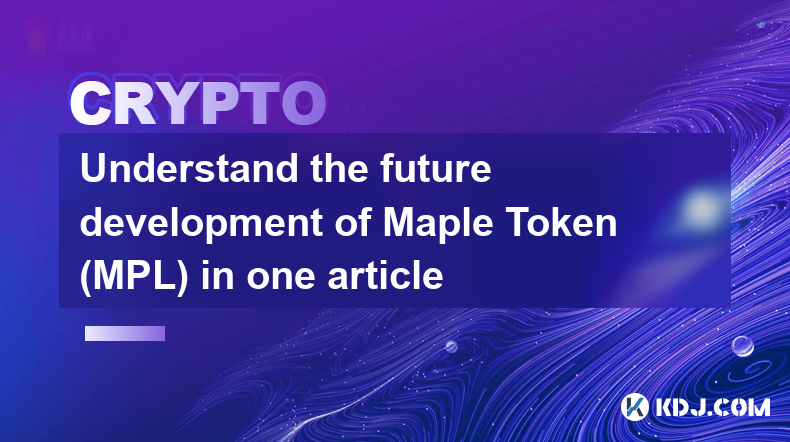-
 Bitcoin
Bitcoin $107,443.3008
-1.17% -
 Ethereum
Ethereum $2,494.2503
-0.63% -
 Tether USDt
Tether USDt $1.0003
0.00% -
 XRP
XRP $2.2496
2.23% -
 BNB
BNB $658.7569
0.63% -
 Solana
Solana $154.9826
1.94% -
 USDC
USDC $1.0000
0.01% -
 TRON
TRON $0.2799
1.07% -
 Dogecoin
Dogecoin $0.1659
-1.78% -
 Cardano
Cardano $0.5745
0.25% -
 Hyperliquid
Hyperliquid $39.7005
0.13% -
 Bitcoin Cash
Bitcoin Cash $519.5989
3.78% -
 Sui
Sui $2.7874
-2.40% -
 Chainlink
Chainlink $13.3762
-1.69% -
 UNUS SED LEO
UNUS SED LEO $9.0784
-0.64% -
 Avalanche
Avalanche $17.9846
-2.81% -
 Stellar
Stellar $0.2390
-0.06% -
 Toncoin
Toncoin $2.9028
0.25% -
 Shiba Inu
Shiba Inu $0.0...01147
-2.17% -
 Litecoin
Litecoin $86.6956
-1.27% -
 Hedera
Hedera $0.1508
-0.50% -
 Monero
Monero $322.6222
3.26% -
 Polkadot
Polkadot $3.4124
-2.99% -
 Dai
Dai $0.9999
0.00% -
 Bitget Token
Bitget Token $4.5434
-1.97% -
 Ethena USDe
Ethena USDe $1.0002
0.00% -
 Uniswap
Uniswap $7.1562
-2.61% -
 Aave
Aave $275.8830
-1.02% -
 Pepe
Pepe $0.0...09790
-4.04% -
 Pi
Pi $0.5018
-5.09%
Understand the future development of Maple Token (MPL) in one article
Maple Finance's MPL token is a promising investment, with long-term growth potential influenced by factors such as protocol adoption, market conditions, and regulatory developments.
Dec 26, 2024 at 02:48 pm

Key Points:
- Overview of Maple Finance and Maple Token (MPL)
- Factors Influencing MPL's Future Development
- Strategies for Investing in MPL Long-Term
- Comparison of MPL with its Core Competitors
- Identifying Opportunities for MPL Trading and Arbitrage
- Regulatory and Legal Considerations for MPL
- FAQs on Maple Token (MPL)
1. Overview of Maple Finance and Maple Token (MPL)
Maple Finance is a decentralized lending protocol that connects borrowers and lenders via a permissioned network. Maple Token (MPL) is the native utility token of the Maple ecosystem, used for network governance, fee sharing, and delegation of interest rate-setting.
2. Factors Influencing MPL's Future Development
- Protocol Growth and Adoption: Increased adoption of the Maple protocol by lenders and borrowers would fuel MPL growth.
- Market Conditions: Bullish cryptocurrency markets typically boost lending activity, positively impacting MPL demand.
- Network Governance Decisions: Community votes on protocol changes and updates can influence MPL's functionality and value.
- Competitive Landscape: Competition from other DeFi lending platforms, such as Compound and Aave, may impact MPL's market share.
- Regulatory Environment: Clarity and favorable regulations regarding DeFi would promote MPL adoption and increase its usability.
3. Strategies for Investing in MPL Long-Term
- Hodling: Holding MPL for extended periods allows potential for appreciation as the Maple protocol gains traction.
- Staking: Participating in MPL staking accrues rewards and contributes to network security.
- Liquidity Provision: Providing MPL liquidity on exchanges or decentralized exchanges (DEXes) earns fees and incentives.
- Trading and Arbitrage: Trading MPL on exchanges can capitalize on price fluctuations, while arbitrage may yield profits from market inefficiencies.
- Delegate Voting: MPL holders can delegate votes to Maple pool delegates who set loan interest rates, potentially influencing protocol earnings.
4. Comparison of MPL with its Core Competitors
| Platform | Token | Features |
|---|---|---|
| Aave | AAVE | Open lending platform with various asset pools |
| Compound | COMP | Decentralized stablecoin lending and borrowing |
| DeFi Saver | DFS | Loan aggregation and optimization platform |
| Idle Finance | IDLE | Multi-strategy yield optimizer with lending features |
| Uniswap | UNI | Decentralized exchange (DEX) enabling token trading |
5. Identifying Opportunities for MPL Trading and Arbitrage
- Technical Analysis: Study MPL price charts and indicators to identify potential trading signals.
- Fundamental Analysis: Monitor Maple protocol usage, lending volume, and MPL token metrics.
- Cross-Exchange Arbitrage: Utilize different exchange platforms to exploit price discrepancies between DEXes and centralized exchanges.
- Volatility Trading: Participate in riskier strategies that capitalize on MPL's price fluctuations.
- Over-the-Counter (OTC) Trading: Engage in private transactions directly with buyers and sellers to secure favorable prices.
6. Regulatory and Legal Considerations for MPL
- Know Your Customer (KYC): Maple Finance requires borrowers to undergo KYC verification to mitigate financial risks.
- Anti-Money Laundering (AML): Maple complies with AML laws and regulations to prevent illicit activities.
- Tax Implications: Holding or trading MPL may incur tax liabilities depending on jurisdiction.
- Legal Status: Seek legal advice to determine the regulatory landscape and implications of holding or trading MPL in your region.
- AML/KYC Due Diligence: Maple Finance conducts AML/KYC due diligence on lenders and borrowers to ensure compliance and address regulatory concerns.
FAQs on Maple Token (MPL)
What is the total supply of MPL?
- There is a circulating supply of 10,000,000 MPL, with a maximum supply of 100,000,000 MPL.
How is MPL used within the Maple protocol?
- MPL is utilized for governance voting, fee sharing, and delegating interest rate-setting to Maple pools.
What are the benefits of holding MPL?
- MPL holders can participate in protocol governance, earn rewards through staking, and potentially benefit from MPL price appreciation.
What are the risks associated with holding MPL?
- Market volatility, protocol vulnerabilities, and regulatory changes can impact the value and utility of MPL.
Where can I buy or trade MPL?
- MPL is listed on several cryptocurrency exchanges, including Binance, Coinbase Pro, and Uniswap V3.
Disclaimer:info@kdj.com
The information provided is not trading advice. kdj.com does not assume any responsibility for any investments made based on the information provided in this article. Cryptocurrencies are highly volatile and it is highly recommended that you invest with caution after thorough research!
If you believe that the content used on this website infringes your copyright, please contact us immediately (info@kdj.com) and we will delete it promptly.
- Circle, Stablecoins, and National Banks: A New Era for Digital Finance?
- 2025-07-01 09:10:12
- Stablecoin Showdown: USD1 vs. USDC and the Regulatory Rumble
- 2025-07-01 09:10:12
- XRP, Wall Street, and the Bitcoin Model: A New Era for Institutional Crypto?
- 2025-07-01 09:30:12
- Grayscale, ETFs, and the SEC: A Crypto Game Changer?
- 2025-07-01 09:30:12
- S&P 500, Bitcoin, and Record Highs: A New Era of Corporate Crypto Adoption?
- 2025-07-01 09:50:13
- SOL Price, ETF News, Rally Sustainability: Decoding Solana's Next Move
- 2025-07-01 09:35:12
Related knowledge

How to customize USDT TRC20 mining fees? Flexible adjustment tutorial
Jun 13,2025 at 01:42am
Understanding USDT TRC20 Mining FeesMining fees on the TRON (TRC20) network are essential for processing transactions. Unlike Bitcoin or Ethereum, where miners directly validate transactions, TRON uses a delegated proof-of-stake (DPoS) mechanism. However, users still need to pay bandwidth and energy fees, which are collectively referred to as 'mining fe...

USDT TRC20 transaction is stuck? Solution summary
Jun 14,2025 at 11:15pm
Understanding USDT TRC20 TransactionsWhen users mention that a USDT TRC20 transaction is stuck, they typically refer to a situation where the transfer of Tether (USDT) on the TRON blockchain has not been confirmed for an extended period. This issue may arise due to various reasons such as network congestion, insufficient transaction fees, or wallet-rela...

How to cancel USDT TRC20 unconfirmed transactions? Operation guide
Jun 13,2025 at 11:01pm
Understanding USDT TRC20 Unconfirmed TransactionsWhen dealing with USDT TRC20 transactions, it’s crucial to understand what an unconfirmed transaction means. An unconfirmed transaction is one that has been broadcasted to the blockchain network but hasn’t yet been included in a block. This typically occurs due to low transaction fees or network congestio...

How to check USDT TRC20 balance? Introduction to multiple query methods
Jun 21,2025 at 02:42am
Understanding USDT TRC20 and Its ImportanceUSDT (Tether) is one of the most widely used stablecoins in the cryptocurrency market. It exists on multiple blockchain networks, including TRC20, which operates on the Tron (TRX) network. Checking your USDT TRC20 balance accurately is crucial for users who hold or transact with this asset. Whether you're sendi...

What to do if USDT TRC20 transfers are congested? Speed up trading skills
Jun 13,2025 at 09:56am
Understanding USDT TRC20 Transfer CongestionWhen transferring USDT TRC20, users may occasionally experience delays or congestion. This typically occurs due to network overload on the TRON blockchain, which hosts the TRC20 version of Tether. Unlike the ERC20 variant (which runs on Ethereum), TRC20 transactions are generally faster and cheaper, but during...

The relationship between USDT TRC20 and TRON chain: technical background analysis
Jun 12,2025 at 01:28pm
What is USDT TRC20?USDT TRC20 refers to the Tether (USDT) token issued on the TRON blockchain using the TRC-20 standard. Unlike the more commonly known ERC-20 version of USDT (which runs on Ethereum), the TRC-20 variant leverages the TRON network's infrastructure for faster and cheaper transactions. The emergence of this version came as part of Tether’s...

How to customize USDT TRC20 mining fees? Flexible adjustment tutorial
Jun 13,2025 at 01:42am
Understanding USDT TRC20 Mining FeesMining fees on the TRON (TRC20) network are essential for processing transactions. Unlike Bitcoin or Ethereum, where miners directly validate transactions, TRON uses a delegated proof-of-stake (DPoS) mechanism. However, users still need to pay bandwidth and energy fees, which are collectively referred to as 'mining fe...

USDT TRC20 transaction is stuck? Solution summary
Jun 14,2025 at 11:15pm
Understanding USDT TRC20 TransactionsWhen users mention that a USDT TRC20 transaction is stuck, they typically refer to a situation where the transfer of Tether (USDT) on the TRON blockchain has not been confirmed for an extended period. This issue may arise due to various reasons such as network congestion, insufficient transaction fees, or wallet-rela...

How to cancel USDT TRC20 unconfirmed transactions? Operation guide
Jun 13,2025 at 11:01pm
Understanding USDT TRC20 Unconfirmed TransactionsWhen dealing with USDT TRC20 transactions, it’s crucial to understand what an unconfirmed transaction means. An unconfirmed transaction is one that has been broadcasted to the blockchain network but hasn’t yet been included in a block. This typically occurs due to low transaction fees or network congestio...

How to check USDT TRC20 balance? Introduction to multiple query methods
Jun 21,2025 at 02:42am
Understanding USDT TRC20 and Its ImportanceUSDT (Tether) is one of the most widely used stablecoins in the cryptocurrency market. It exists on multiple blockchain networks, including TRC20, which operates on the Tron (TRX) network. Checking your USDT TRC20 balance accurately is crucial for users who hold or transact with this asset. Whether you're sendi...

What to do if USDT TRC20 transfers are congested? Speed up trading skills
Jun 13,2025 at 09:56am
Understanding USDT TRC20 Transfer CongestionWhen transferring USDT TRC20, users may occasionally experience delays or congestion. This typically occurs due to network overload on the TRON blockchain, which hosts the TRC20 version of Tether. Unlike the ERC20 variant (which runs on Ethereum), TRC20 transactions are generally faster and cheaper, but during...

The relationship between USDT TRC20 and TRON chain: technical background analysis
Jun 12,2025 at 01:28pm
What is USDT TRC20?USDT TRC20 refers to the Tether (USDT) token issued on the TRON blockchain using the TRC-20 standard. Unlike the more commonly known ERC-20 version of USDT (which runs on Ethereum), the TRC-20 variant leverages the TRON network's infrastructure for faster and cheaper transactions. The emergence of this version came as part of Tether’s...
See all articles

























































































